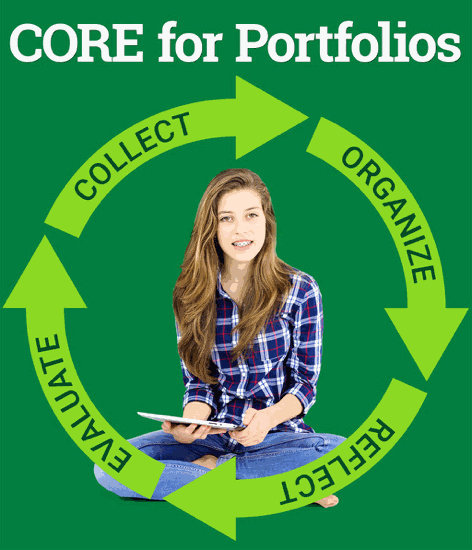Portfolios And Learning
I've spent a good deal of time examining the ways in which learning and assessment are related. When assessment is limited or restricted to an interaction between the student and the institution - even if it is a test score, the value of the learning from assessment is limited. Real learning only occurs when opportunities for revision and improvement exist.
The essence of a portfolio lies in that ability to re-do tasks as needed to improve the learning. A portfolio should serve as a repository for students to collect, organize, reflect, and evaluate. An e-portfolio does this digitally. A paper based portfolio system that only serves to collect exemplars of student work without the other stages of organization, reflection, and evaluation is of little real use.
The process of e-portfolio learning can be seen in this graphic.

As an educator, I
like the concept of "core" as something central to the educative process.
A well done e-portfolio allows a student the chance to engage in the
collection of evidence, the organization of evidence, reflection on
learning, and finally evaluation on learning achievements.
A
second key part of an e-portfolio system should be the method by which the
evidence, reflection, and evaluation is shared. Implicit in an e-portfolio
is the notion of digital sharing; however, it is important to enable the
student a real opportunity for choice in sharing portfolio based
assessments.
Finally, e-portfolios make students the center of
the learning experience. Learning becomes something in which they are
engaged, not a process done to them. E-portfolios can easily begin to
remove a factory mentality about the educative
process.
*CORE = Collect, Organize, Reflect, Evaluate
Dr. Roger Fuller, Ph.D. - CEO & Co-Founder, Gryphondale - 4/3/15
